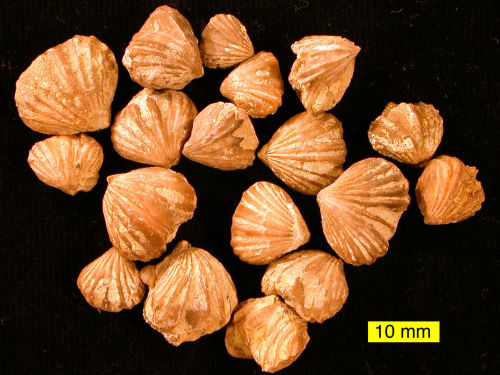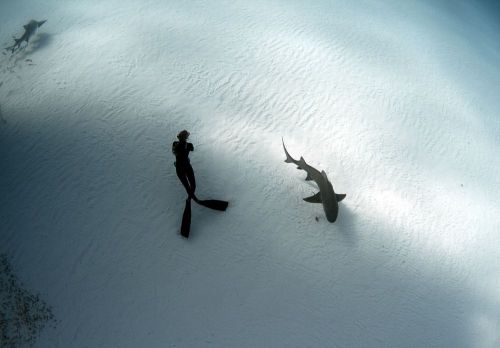X

x
More Posts from Llamaslikesciencetoo and Others

A starfish walking back to the water.


Green burial practices could help the environment
Traditional caskets are hundreds of pounds of wood, metal and whatever cushioning goes inside.. Burial vaults, the enclosures that barricade each casket from the elements, can be around 3,000 pounds of cement, sometimes steel. One gallon of toxic embalming fluid is used per 50 pounds of body. Add it all up and you’ve got around two tons of material per body chilling in the earth forever.
Despite the downsides of burial, not everyone wants to be cremated. Plus, there’s plenty of evidence suggesting the energy it takes to burn a body down wreaks significant damage on the environment.
Green burial could be the solution. The idea is to make as little an impact on the natural environment of the burial site as possible.
Follow @the-future-now
First U.S. Climate Refugees Forced to Leave Their Vanishing Island Home
Isle de Jean Charles in Louisiana is vanishing into the sea and its residents must relocate.

The U.S. Department of Housing and Urban Development (HUD) awarded $48 million to the Biloxi-Chitimacha-Choctaw tribe who lives on this sinking island 80 miles southwest of New Orleans so that they may reestablish community further north.
Their home — or what was once a 22,000-acre island — has been reduced to a 320-acre strip where only 25 houses remain.

This makes members of the Louisiana tribe the first official climate refugees in the United States as rising sea levels have swallowed 98% of their land.
Find out more in this Huffington Post piece.
(Map via Google Maps. Sinking house photo by Karen Apricot via Flickr.)
What Life On A New Planet Will Mean







Diving with a Great White: Not so frightening after all

Sharks are fucking metal!

The Ocean Turnover
These are brachiopods, a type of filter-feeding organism that first evolved in the Cambrian era oceans. Although they look a lot like modern-day bivalves (clams), they are a very different organism, found in a totally different phylum. They can readily be distinguished by their shell shapes; brachiopods have sort of a “kink” in their shells whereas bivalves have more rounded shapes. Clams are molluscs, while brachiopods come from the phylum brachiopoda. These two types of filter-feeding organisms have an interesting interplay in the geologic record; if you pick up a limestone from the Paleozoic it is likely to be dominated by brachiopods, while Mesozoic and Cenozoic bivalve shells dominate limestones.
Keep reading
dog


DON’T GO IN THE WATER: NEW EVIDENCE THAT SOME DINOSAURS WERE STRONG SWIMMERS
Claw marks left on a river bottom in Sichuan, China are evidence for dinosaurs’ ability to swim relatively long distances. According to an international team of scientists in the journal Chinese Science Bulletin, theropod species of dinosaurs were able to travel in relatively deep bodies of water.
Keep reading
-
 5am-moon liked this · 1 month ago
5am-moon liked this · 1 month ago -
 smol-chocolate reblogged this · 1 month ago
smol-chocolate reblogged this · 1 month ago -
 angel144k liked this · 2 months ago
angel144k liked this · 2 months ago -
 mechanicanimal liked this · 2 months ago
mechanicanimal liked this · 2 months ago -
 leaf-inthewind reblogged this · 2 months ago
leaf-inthewind reblogged this · 2 months ago -
 sensitivesc0rpi0 liked this · 3 months ago
sensitivesc0rpi0 liked this · 3 months ago -
 andy-mac liked this · 3 months ago
andy-mac liked this · 3 months ago -
 goodclear reblogged this · 3 months ago
goodclear reblogged this · 3 months ago -
 goodclear liked this · 3 months ago
goodclear liked this · 3 months ago -
 omgherbalicious liked this · 3 months ago
omgherbalicious liked this · 3 months ago -
 iamsancho reblogged this · 3 months ago
iamsancho reblogged this · 3 months ago -
 iamsancho liked this · 3 months ago
iamsancho liked this · 3 months ago -
 1dayitwillmakes3nse reblogged this · 3 months ago
1dayitwillmakes3nse reblogged this · 3 months ago -
 mickle1325 liked this · 3 months ago
mickle1325 liked this · 3 months ago -
 bluefral liked this · 3 months ago
bluefral liked this · 3 months ago -
 splashonabitch liked this · 3 months ago
splashonabitch liked this · 3 months ago -
 weexley reblogged this · 3 months ago
weexley reblogged this · 3 months ago -
 0zthegreat reblogged this · 3 months ago
0zthegreat reblogged this · 3 months ago -
 0zthegreat liked this · 3 months ago
0zthegreat liked this · 3 months ago -
 thatduudemic liked this · 3 months ago
thatduudemic liked this · 3 months ago -
 kenshitty reblogged this · 3 months ago
kenshitty reblogged this · 3 months ago -
 influxofdogs reblogged this · 3 months ago
influxofdogs reblogged this · 3 months ago -
 erfrorenesherz liked this · 3 months ago
erfrorenesherz liked this · 3 months ago -
 biglibraenergy reblogged this · 3 months ago
biglibraenergy reblogged this · 3 months ago -
 any-dr3ams liked this · 3 months ago
any-dr3ams liked this · 3 months ago -
 starrystargazer reblogged this · 3 months ago
starrystargazer reblogged this · 3 months ago -
 sickboii310 reblogged this · 3 months ago
sickboii310 reblogged this · 3 months ago -
 old-habbits-never-die reblogged this · 3 months ago
old-habbits-never-die reblogged this · 3 months ago -
 par-s reblogged this · 3 months ago
par-s reblogged this · 3 months ago -
 karmelkreme-86 reblogged this · 3 months ago
karmelkreme-86 reblogged this · 3 months ago -
 itssedon reblogged this · 3 months ago
itssedon reblogged this · 3 months ago -
 keep0ner0lled reblogged this · 3 months ago
keep0ner0lled reblogged this · 3 months ago -
 nozzur reblogged this · 3 months ago
nozzur reblogged this · 3 months ago -
 keepmewherethe-lightis liked this · 3 months ago
keepmewherethe-lightis liked this · 3 months ago -
 awzer reblogged this · 3 months ago
awzer reblogged this · 3 months ago -
 awzer liked this · 3 months ago
awzer liked this · 3 months ago -
 m2055 liked this · 3 months ago
m2055 liked this · 3 months ago -
 nocaute reblogged this · 3 months ago
nocaute reblogged this · 3 months ago -
 sub4t0m1c reblogged this · 3 months ago
sub4t0m1c reblogged this · 3 months ago -
 weekndinrio reblogged this · 4 months ago
weekndinrio reblogged this · 4 months ago -
 amoremvao liked this · 5 months ago
amoremvao liked this · 5 months ago -
 hypnoticreality reblogged this · 5 months ago
hypnoticreality reblogged this · 5 months ago -
 hypnoticreality liked this · 5 months ago
hypnoticreality liked this · 5 months ago
Mainly interested in ecology, but also the entirety of science.
179 posts